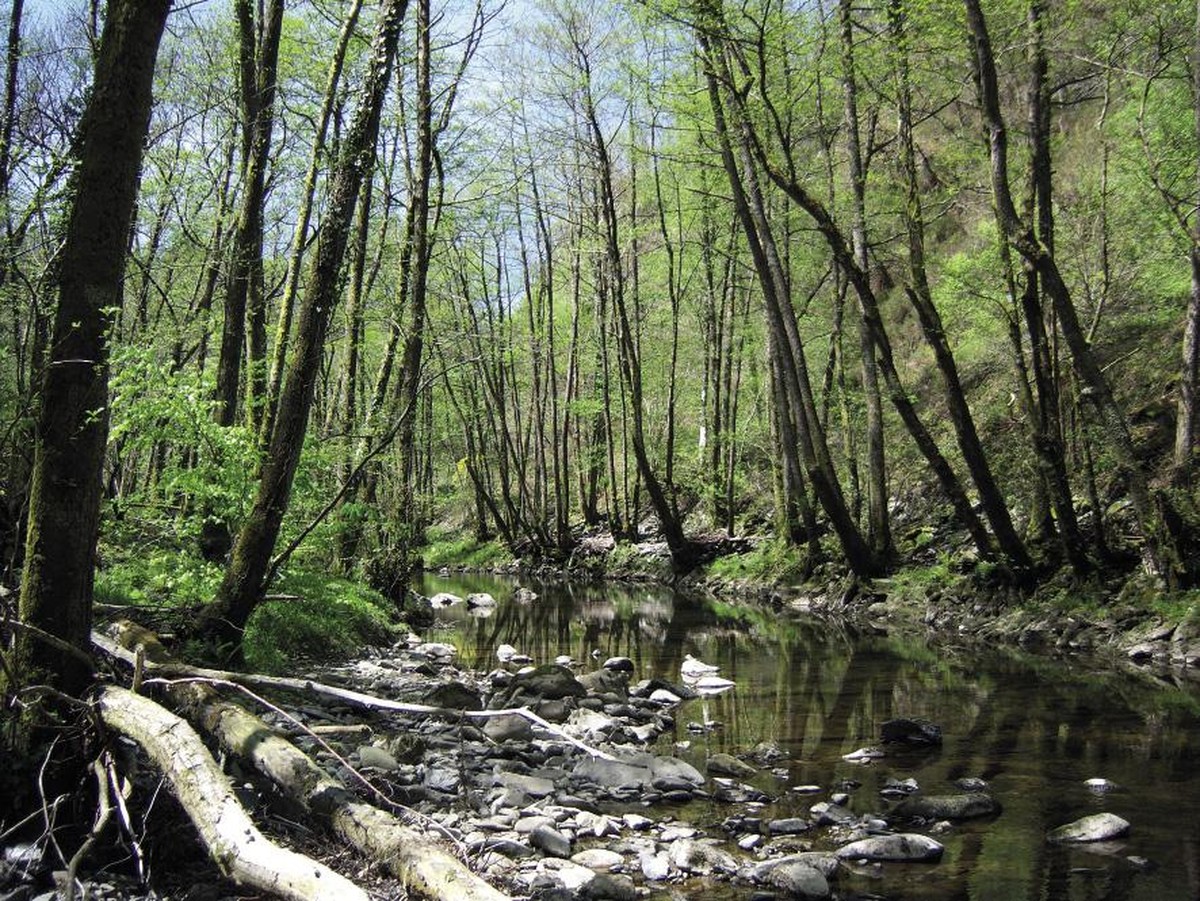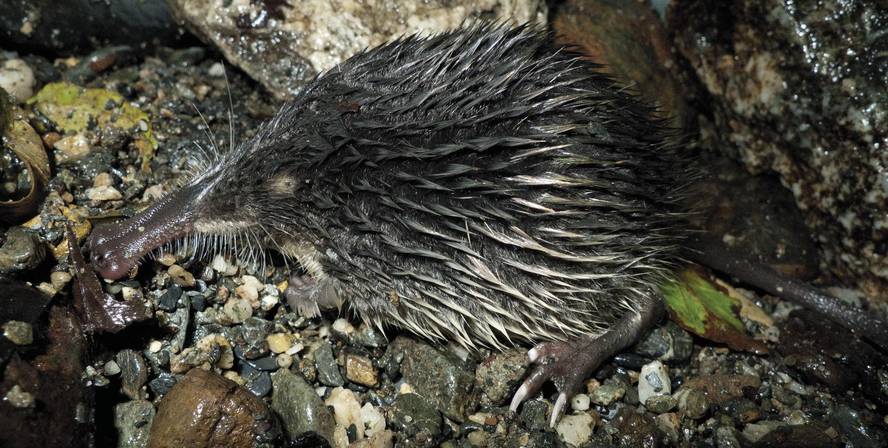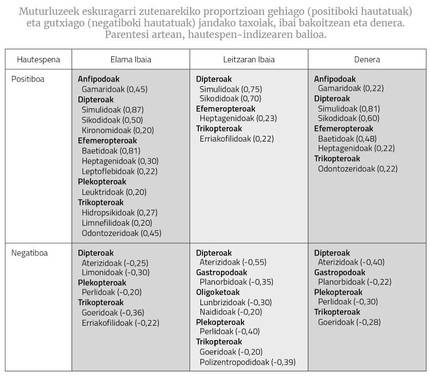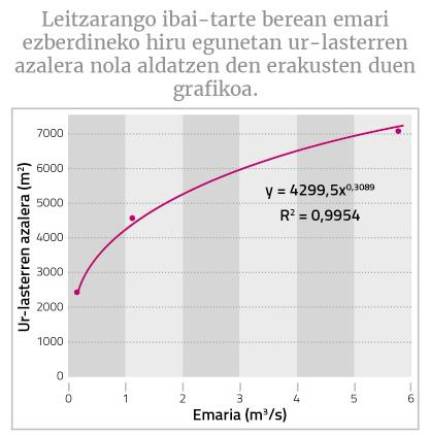Ecology of the Pyrenean Dam and Review of Ecological Flows
Zoologia eta Animalia Zelulen Biologia Saila, Zientzia eta Teknologia Fakultatea (EHU)
The pyrenean snout or aquatic mole, Galemys pyrenaicus, is a semi-aquatic intective mammal, from the mole family. Night life animal that inhabits mountain races of clean water well oxygenated, north of the Iberian Peninsula and on both sides of the Pyrenees. The main key factor for life is the regular flow of water throughout the year, so it prefers oceanic to Mediterranean climates. In recent decades, the area of distribution of the damage has been reduced by more than 50%, which has led to its inclusion as Vulnerable in the catalogue and red list of threatened species of the IUCN. What is worrying is that also in the rivers that are improving their ecological state has reduced the population of the desmán. Possible causes include the fragmentation of metapopulations, habitat degradation and scarcity of pastures. However, there is no clear diagnosis of decline that prevents the design of effective management plans.
Thick substrates (especially reefs and rocks) predominate in the habitat of the dismantle, hardly observable in clay areas. In a recent study we have seen that the collapse opts for a stream of water in front of calm waters and ponds. As for spatial ecology, we can say, therefore, that it is a specialist rheophilous species. This selection at the habitat level is also greater as the ecological state of the river deteriorates, since the inert waters, apparently not favoured by dismantling, are aggravated by changes in flow caused by hydroelectric plants and by the fine sediments that reach the river as a result of forestry activity. What we don't know is why they spend more time in water streams: is it the habitat itself or the fodder it has? This we can know with the help of a deep diet study.
Diet of water-mole
The overall objective of this study is to analyze the ecological needs of the aquatic environment to implement an effective management plan. For this, the first objective has been to determine the diet of this species. It is believed that the desmán will have a generalist diet, grazing with numerous groups of invertebrates.
To analyze the diet of the collapse we use already refined molecular techniques. These molecular techniques analyze the DNA of the feces, whose main advantage is to be able to identify prey remains that cannot be visually separated in the feces, such as soft invertebrates in the form of worms. However, this novel methodology also presents disadvantages such as the need to fine-tune tools and working protocols, the lack of standardization to date, the error of considering prey prey (remnants of the digestive system) as part of the predator diet and the risk of contagion of samples, among others.
To carry out the study of the deyections, special deposits for the aquatic mole were designed and excrements were collected, in September and October 2016, in the rivers Leitzaran (Oria river basin, Gipuzkoa) and Elama (Urumea river basin, Navarra). The Leitzaran River is in good ecological condition, but is affected by numerous hydroelectric plants, with much longer stretches than natural ones. The Elama River, for its part, is among the best preserved in the Basque Country, since there has been hardly any human activity in its basin in the last hundred years. 94 fresh excrements were collected in each river (188 in total). In addition to identifying the dams of the dismantle, we identified the dismantle in all feces, confirming that it was the own stool manufacturer.
The results showed that the ephemeropters, diptera, amphipods and tricopters were the prey that appeared in most of the feces of the long snouts, so they were the most consumed. The most common families were heptagenids, gamarids, baetids and simulated. However, analyzing the results by rivers, significant differences were observed. The most significant differences were odontoceridos, perlido, leptofledos and river crabs (the first three usually ate in Elama and the last in Leitzaran).
Does fodder explain habitat selection?
The second objective of our study was to analyze the selection of prey regarding the availability of invertebrate diets, that is, if the availability of preferred invertebrates explains the fondness for currents. It is believed that the invertebrates that appear in the currents explain the fondness of the Pyrenean disappointment to the current. For this purpose, differences between habitats are expected in the availability of pastures.
To analyze the choice of diets, first, we characterize the availability of pastures in each river. To do this, we collected ten samples of invertebrates per habitat (10 in watercourses, 10 in calm waters and 10 in wells) in Elama and others in Leitzaran. In addition to identifying invertebrates larger than 2 mm, we quantify and measure them to calculate diversity, density and biomass. Contrary to what we could expect, the available fodder did not vary significantly from habitat to habitat. From this result we can conclude, therefore, that if the slope prefers the currents, it will not be for the fodder. Perhaps we could find the selection in buoyancy, since in deep and inert waters the animal has to work more to reach the bottom and keep looking for food.

What invertebrates does the snout prefer?
The second step to knowing the choice of fodder of the snout was to compare the diet with the available food. Some catches (positive selection) were consumed in greater proportion than those available and others in less proportion (negative selection). Among the positively selected ones we can classify the aquatic invertebrates that inhabit on the stones (simulated, baetids and heptagenids) and those associated with the coarse organic matter (gamarids, odontocedes, leptofledos, limnephilids and leutrids). Among the negatively selected ones are those that inhabit thin substrates (atherids, limonids, naides and lumbricides), shells with hardness (drips and planorbids) and others that are predators (poorly, polyentropodites and riacophils). We believe that negative selection with this last group could be related to some mechanism of defense of invertebrates (e.g., flight). However, for a better understanding of selection, more in-depth research will be needed based on the characteristics of the catches.
In general, as for the diet, the snout is a generalist species, since it feeds on numerous taxa of prey. However, select dams, as some exploit them above availability (positive selection) and others below (negative selection). However, the choice of diet was different in each river. In Elama, unlike Leitzaran, water toponyms opted for invertebrates (mainly dividers) associated with coarse organic matter. To understand this, we could seek a possible explanation in the capacity of the river to retain organic matter. Elama is a stream in better health, where reserves of organic matter abound. In the accumulation of leaves, branches and trunks appear more dividing invertebrates that seem to like the dismantle. In Leitzaran, however, it is more difficult to find accumulation of organic matter. In it, the continuous flow changes that occur as a result of hydroelectric activity do not respect the natural dynamics of the river, which makes it difficult to maintain its heterogeneity. We could say that in Elama the buttresses showed a more selective attitude, since in the diet these invertebrates associated with organic matter had a great weight. In Leitzaran, however, since the presence of these families did not exist, they were headed to select other dams. The attitude of the buttresses there was more opportunistic. The results suggest that in cases where the retention of coarse organic matter is higher, the punctures are thinner.
Suitable ecological flows?
The extraction of water from rivers by reservoirs and hydroelectric plants is one of the main threat factors for this animal. It is not known how the flow changes affect the ecology of the dam. We could predict that the number of currents will increase with the increase in flow, but it is not clear how extractions affect the abundance of currents. Nor do we know what minimum flow we should establish in the races in which this animal is located. It is essential to deepen the knowledge of all this in order to carry out an adequate management of the species. Therefore, the third objective of this study was to analyze how flow changes affect current availability. This will encourage reflection on the ecological flows necessary to carry out management projects for the conservation of the species.
Analyzing the ratio of current availability to flow is expected to show some breakpoint. This point will mark the ecological flow, that is, a point can be found below a flow that implies a disproportionate decrease in the abundance of water currents. This study characterized a stretch of river under the influence of the Ameraun hydroelectric plant in Leitzaran, for three days of different flow, to see how the surface of the habitat most used changes due to landslides with flow changes. Results showed a significant increase in current surfaces with increased flow rate. As can be seen in the graph above, below the point of 1.123 m3/s the surface of the currents drops considerably, so at this point we have determined our hypothetical ecological flow.
Analyzing the data of the daily natural flows of the Andoain Water Station in the last 15 years, it is observed that 41% of the days are lower than the natural flow. Above our point comes the bypass channel of the Ameraun hydroelectric plant, with an extraction permit of 3,000 L/day. Therefore, we analyze how the flow changes, at the highest level, could affect the availability of the currents of our point if the power plant was operational every day. It was found that in 84% of the days the flow rate of our point would be less than 1,123 m3/s, that is, twice that obtained naturally. This shows us that the operation of the plant can halve the number of days that exceed this hypothetical ecological flow established by us. Although these results have been performed only with data of three days, it is evident the possible condition of the extractions.
Main conclusions of the study
The snout is a semi-aquatic mammal adapted to graze in water streams, specializing in habitat but with a generalist diet. The selection of diets, on the contrary, varies according to the ecological state of the rivers: it presents a more selective attitude in a river with greater capacity of accumulation of coarse organic matter, since it selects the invertebrates that appear in it, and more opportunistic in more adverse situations. In Leitzaran, the artificial alteration of the flow due to the human activity of hydroelectric plants entails an alteration of the natural regime of the river and very variable habitat conditions that hinder its life.
The choice of water currents by the toponyms makes it essential to favor the abundance of river currents and ensure their natural dynamics. It is essential to implement good management practices and regulate the ecological flow according to the needs of the hydrants.








